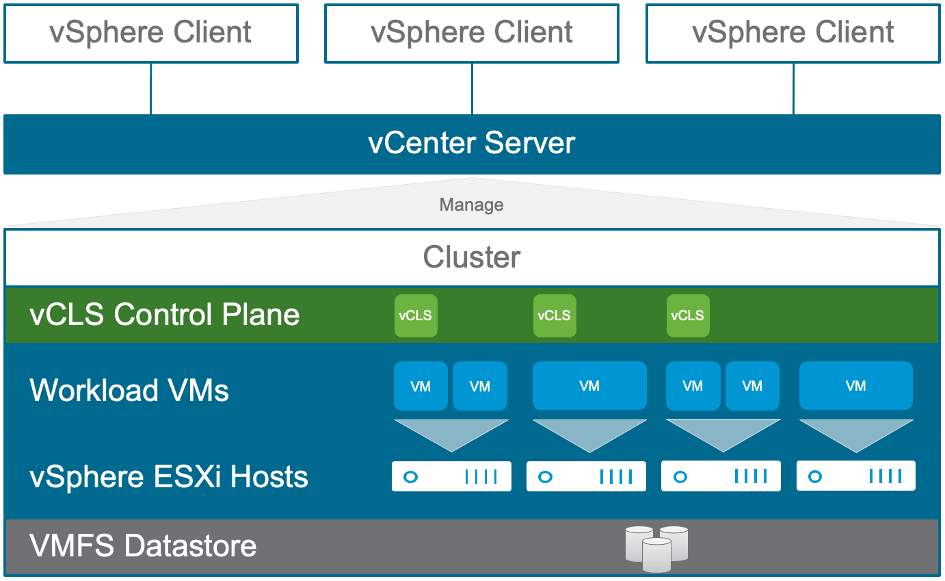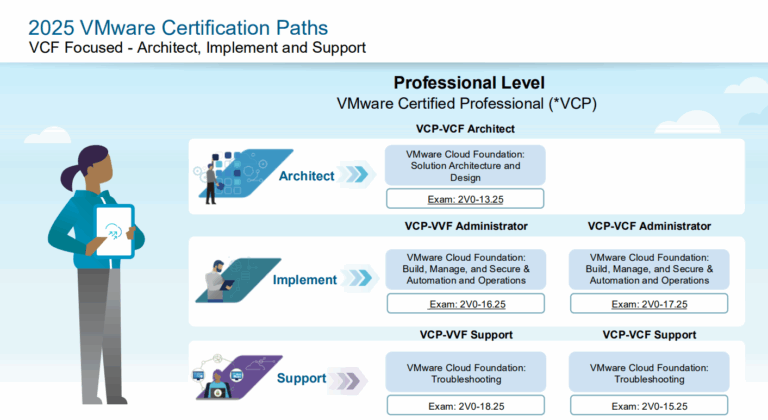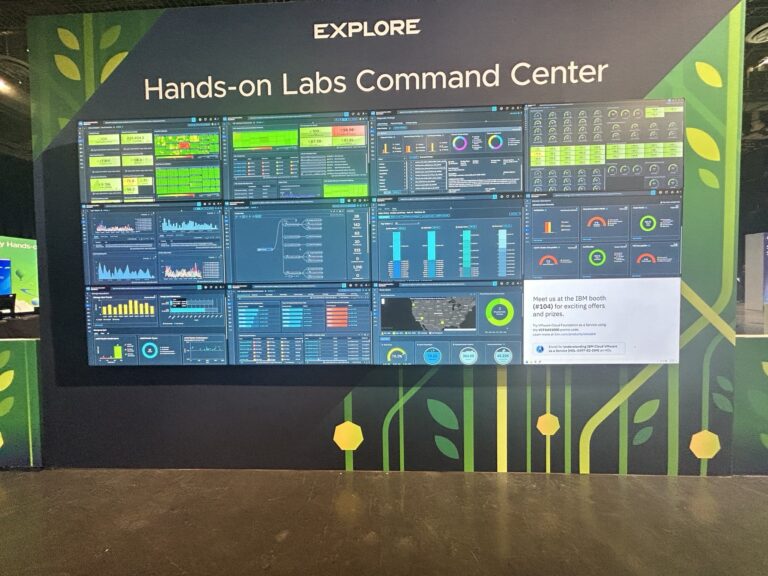In this blog post, we’ll explore what vCLS is, how it works, and the benefits it provides for virtualized environments.
What is vSphere Cluster Services?
vSphere Cluster Services (vCLS) is a new feature introduced in vSphere 7.0 that provides a highly available control plane for vSphere clusters. It is a cluster-level service that provides a platform for managing and maintaining the health of virtualized infrastructure.
How does vCLS work?
vCLS works by creating a highly available control plane for vSphere clusters. It runs as a service on each host in a vSphere cluster and provides a platform for managing and maintaining the health of virtualized infrastructure. vCLS is designed to be self-contained and independent of any specific vSphere feature, so it can be used to provide high availability for any vSphere service that requires a control plane, such as vSphere vMotion, vSphere HA, or vSphere DRS
One of the key features of vCLS is the use of a distributed lock management system to coordinate access to shared resources. This ensures that virtual machines and other services can operate reliably even if there are network failures or other issues that might affect individual hosts.
Benefits of vCLS
vCLS provides a number of benefits for virtualized environments, including:
- High availability: vCLS provides a highly available control plane for vSphere clusters, ensuring that virtual machines and other services remain available even in the event of host failures or network issues.
- Scalability: vCLS is designed to scale easily, so it can be used to manage even the largest vSphere clusters.
- Simplified management: Because vCLS is a self-contained service, it is easy to manage and maintain, reducing the administrative overhead associated with traditional high availability solutions.
- Increased flexibility: vCLS can be used to provide high availability for any vSphere service that requires a control plane, making it a highly flexible solution.
Disadvantages of vCLS
While vSphere Cluster Services (vCLS) offers numerous benefits for managing and maintaining virtualized infrastructure, there are also some potential disadvantages to consider:
- vSphere 7.0 or later requirement: vCLS is a new feature that is only available in vSphere 7.0 or later. This means that organizations running older versions of vSphere will not be able to take advantage of vCLS without upgrading to a newer version.
- Additional resource requirements: vCLS requires additional resources, such as CPU and memory, to operate effectively. Organizations with limited resources may find it challenging to implement vCLS without impacting the performance of their virtualized environment.
- Complexity: While vCLS is designed to be self-contained and easy to manage, it still adds another layer of complexity to the virtualized environment. Organizations with limited IT resources may find it challenging to configure and maintain vCLS effectively.
- Licensing: vCLS requires a vSphere Enterprise Plus license.
Organizations should carefully evaluate their needs and resources before implementing vCLS to ensure it is the right solution for their virtualized environment.
Conclusion
vSphere Cluster Services (vCLS) is an important new feature in vSphere 7.0 that provides a highly available control plane for vSphere clusters. By providing a self-contained and scalable platform for managing and maintaining virtualized infrastructure, vCLS offers a number of benefits for virtualized environments. If you’re using vSphere 7.0 or later, it’s definitely worth considering implementing vCLS to ensure the availability and reliability of your virtual infrastructure.




